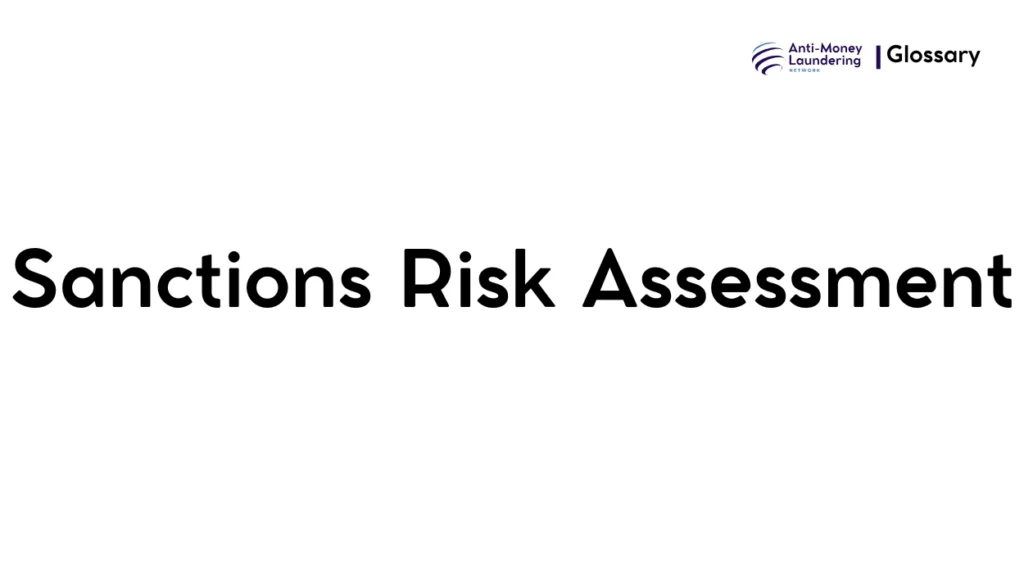Understanding sanctions risk assessment is vital for compliance officers and financial institutions engaged in AML efforts. This guide thoroughly covers the definition, purpose, implementation, and impact of sanctions risk assessment within the AML framework.
Definition
Sanctions Risk Assessment in Anti-Money Laundering (AML) is the systematic process by which organizations identify, evaluate, and manage the risks of engaging with individuals, entities, or countries subject to economic or financial sanctions imposed by governments or international bodies. It focuses on assessing exposure to sanctions violations to prevent illegal transactions that could finance terrorism, human rights abuses, or other illicit activities.
Purpose and Regulatory Basis
Sanctions Risk Assessment serves to safeguard institutions from inadvertently breaching global or national sanctions laws, thus mitigating financial, legal, and reputational risks. It complements broader AML strategies by ensuring compliance with regulatory requirements and international standards such as those established by the Financial Action Task Force (FATF), the USA PATRIOT Act, and the European Union’s Anti-Money Laundering Directives (AMLD). These regulations mandate organizations to conduct risk-based assessments to tailor appropriate controls that prevent sanctions breaches.
When and How it Applies
Sanctions Risk Assessment is applied primarily in customer onboarding, ongoing transaction monitoring, and periodic reviews. It is triggered when a client or partner’s profile, transaction, or geographical location indicates potential exposure to sanctioned entities. For example, onboarding a customer from a sanctioned country requires enhanced due diligence and screening, and transactions involving countries or individuals under sanctions demand scrutiny to prevent illicit flows.
Types or Variants
While the core process remains consistent, sanctions risk assessments can vary based on organization type and scope:
- Country/Geographical Risk Assessments: Evaluate risks related to customers or transactions linked to specific countries under sanctions.
- Customer Risk Assessments: Focus on individual or entity profiles with potential sanctions exposure.
- Product and Service Risk Assessments: Review risks arising from specific financial products or services, such as cross-border wire transfers or trade finance that may be employed to bypass sanctions.
Procedures and Implementation
Steps to Comply
- Identification: Compile and maintain updated sanctions lists sourced from bodies like OFAC, UN, and EU.
- Risk Profiling: Analyze customers, transactions, products, and geographies to assign risk ratings.
- Screening: Implement automated sanctions screening tools to check entities against watchlists.
- Enhanced Due Diligence (EDD): Conduct deeper investigations for high-risk customers or transactions.
- Ongoing Monitoring: Continuously monitor transactions and update risk profiles with new intelligence.
- Training and Awareness: Educate staff to recognize sanctions risks and respond appropriately.
- Reporting: Establish protocols for promptly reporting suspicious activities to regulatory authorities.
Organizations should integrate these steps within robust systems and dedicated controls to uphold an effective sanctions compliance program.
Impact on Customers/Clients
From the customer perspective, sanctions risk assessment influences onboarding procedures and ongoing interactions:
- Due Diligence Requirements: Customers identified as higher risk face detailed verification and periodic reviews.
- Restrictions: Entities or persons listed on sanctions lists are barred from conducting transactions.
- Communication: Customers may be subject to transaction holds or inquiries to clarify their source of funds or connection to sanctioned parties.
These measures ensure compliance while respecting customer rights through transparent procedures.
Duration, Review, and Resolution
Sanctions risk assessments are dynamic and require regular scheduled reviews, typically annually or more frequently if there are significant changes in risk factors such as updates in sanctions regimes or shifts in customer profiles. Resolution of identified risks may involve enhanced controls, transaction blocking, or escalation to authorities. Continuous update ensures the organization adapts to evolving sanctions environments.
Reporting and Compliance Duties
Institutions bear the responsibility to document risk assessment methodologies, decisions, and controls comprehensively. They must file Suspicious Activity Reports (SARs) or equivalent notifications when detecting potential sanctions breaches. Failure to comply can result in severe penalties, including fines, reputational damage, and operational restrictions.
Related AML Terms
Sanctions Risk Assessment is closely connected to other AML concepts such as:
- Customer Due Diligence (CDD)/Enhanced Due Diligence (EDD)
- Transaction Monitoring
- Know Your Customer (KYC)
- Risk-Based Approach (RBA)
- Politically Exposed Persons (PEP) Screening
Understanding these interconnections enables holistic risk management.
Challenges and Best Practices
Challenges
- Keeping pace with constantly changing sanctions lists and regulations.
- Integrating systems for real-time screening and monitoring.
- Managing false positives while ensuring no risky transactions slip through.
- Training staff adequately to recognize and manage sanctions risks.
Best Practices
- Deploy up-to-date automated screening systems.
- Establish clear escalation and reporting protocols.
- Foster a compliance culture with regular staff training.
- Periodically review and update risk assessments and controls.
- Collaborate with legal experts to interpret regulatory changes promptly.
Recent Developments
Modern sanctions risk assessments increasingly leverage technologies such as artificial intelligence and machine learning to enhance screening accuracy and detect complex patterns indicative of sanctions evasion schemes. Regulatory agencies worldwide continue to tighten sanctions compliance requirements and emphasize more frequent and detailed risk assessments, particularly in sectors vulnerable to proliferation financing or terrorism financing risks.
Sanctions Risk Assessment is a cornerstone of effective AML compliance, enabling organizations to systematically identify and mitigate exposure to sanctions violations. It fosters adherence to global regulatory standards, protects institutions from financial and reputational harm, and ensures the integrity of international financial systems.

